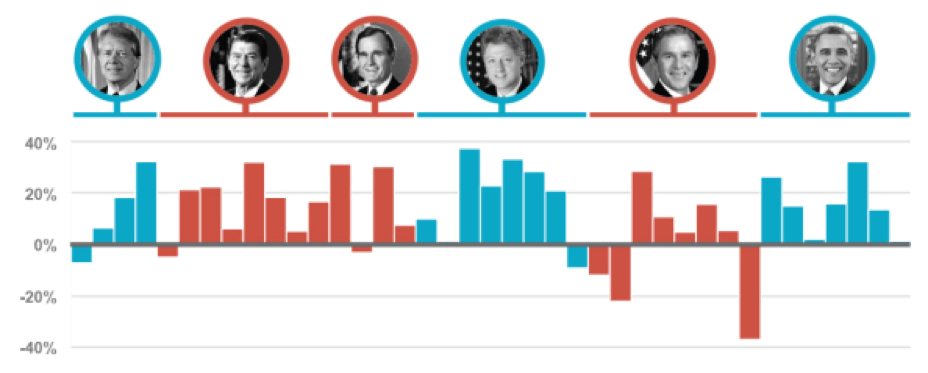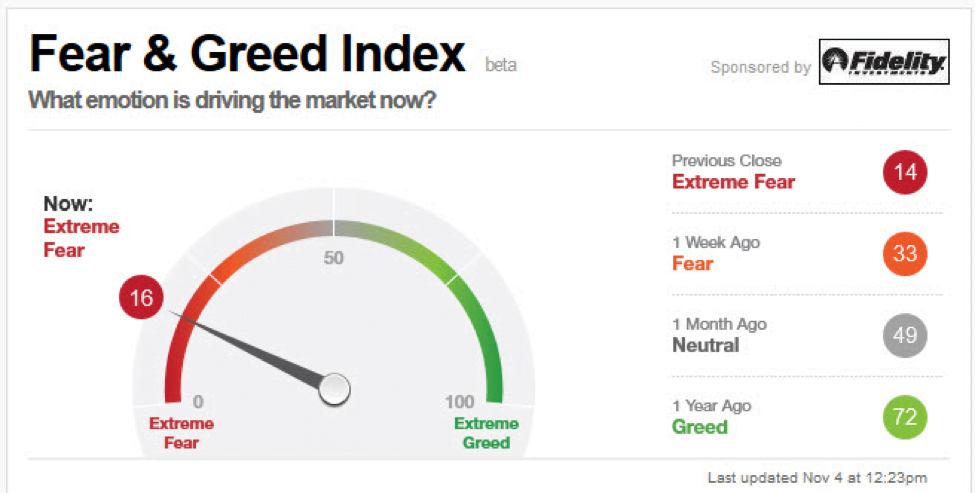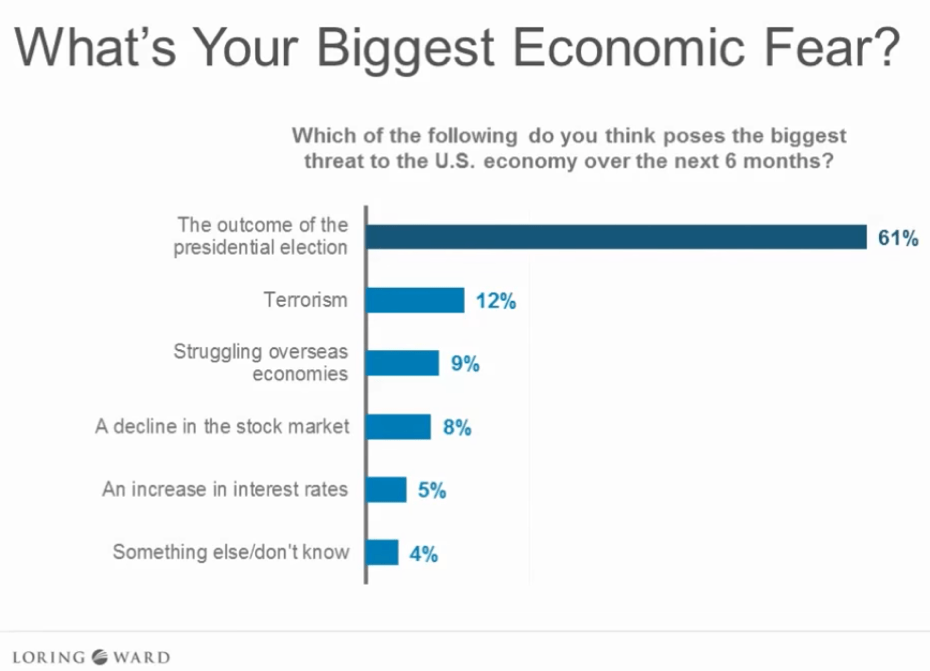The big day is nearly here. The United States’ long-running 2016 election spectacle is lurching toward its final week and you have probably found yourself wondering what the 2016 Presidential election will mean for your investments and your money.
After all…
The S&P has just experienced it’s longest losing streak since 1980 (9 consecutive days of negative returns), and the CNN “Greed and Fear Index” is screaming “Doom and Gloom.”
But you can’t always believe what you read. And, you should almost never make changes in your investment portfolio because of what’s happening in the news.
Typically, during times of fear and uncertainty, investors will consider selling out all or part of their investments and sitting on the sidelines in cash. But any time you “time out” of the market, you have to be sure you can be right not once, but twice, because you’re going to have to get back in or you’ll lose out on all of the market’s future gains.
So, this article is going to highlight some facts about what impact Presidents have had on the average investors’ money in the past.
I also dedicate a large percentage of my time to writing about “evidence-based investing.” Color me crazy, but I prefer facts to sensationalism. So it would be a bit disingenuous of me to come down on either side of the “optimism/pessimism” spectrum without giving clear reasons why.
But let’s start by taking a look at a couple of indicators of sentiment.
Here’s a poll from Bankrate.com that suggests 61% of Americans think the Presidential election is the biggest threat to the US economy.
And lest we think this is due to “low information,” here’s a poll of people who should know better.
But are these sentiments borne out by the facts?
Not only that, do you actually care what the GDP numbers are, or aren’t you actually focused on earning a good return on your investments?
Here’s a quick graphic that shows the results of the last six elections, evenly spread out between Democrats and Republicans.

Most people associate Republicans with business-friendly policies and therefore positive stock market returns, but you can see that every Republican listed was in office during at least one year of negative returns in the S&P.
The only President whose 8-year tenure saw consistently positive returns was Barack Obama and there is little to suggest that policies he enacted led to those returns, rather, the first year he was in office was the beginning of the huge—and inevitable—Bull Market recovery from the Financial Crisis.
Analysts and statisticians have studied the data conclusion is consistently that stock market returns during any given Presidency are basically random.
In fact, here are some data points that will likely surprise you:
- Stocks rose during stagflation in the 1970s
- Ronald Reagan, who is typically associated with good economic times, was in office on Black Monday when the Dow Jones fell 22.61% in a single day
- Bill Clinton, another President who is typically thought of to have presided over good times, was in office as the tech bubble burst
- Most people thought Obama care would be terrible for healthcare companies, but since the ACA passed, the healthcare sector is up over 180%
And it’s not just the past couple of decades, either. For far back as you care to go, there appears to be little to no correlation between market performance and who’s in the White House
Added to all the above is the fact that whoever wins in 2016 will have less discretionary power than any prior president.
So regardless of what the talking heads, and political class would have you believe, when it comes to your investing habits, it doesn’t pay to get all worked up about who the next occupant of 1600 Pennsylvania Avenue will be.
But that doesn’t mean you should throw your hands up in the air.
On the contrary, the best predictor of how you’ll do is the habits and planning you do to ensure the best possible outcome, regardless of national politics.
Here are some recommendations to help you weather whatever happens come Election Day:
“Always plan ahead. It wasn’t raining when Noah built the ark.”
-Richard Cushing
1. Work with a fee-only, fiduciary financial advisor to craft an Investment Policy Statement so you’ll have a flight plan when the future seems uncertain. Every single client who works with my firm has this document on file, and it is a consistent touch point for our work together.
“Nothing can dim the light which shines from within.”
-Maya Angelou
2. Work with your advisor to understand the range of potential outcomes when it comes to not only the size of your investment portfolio, but the truly meaningful number: how much money that portfolio can produce for you during retirement. Knowing that you are on track for a satisfactory outcome can reduce your tendency to buy into the financial drama du jour.
“Give me a lever long enough and a fulcrum on which to place it, and I shall move the world.”
-Archimedes
3. Understand your leverage points: The factors that will contribute the most, by far, to your long-term financial security are your savings rate, your investments’ long-run rate of return, and your willingness to stay the course during tough times in order to enjoy compound returns.


